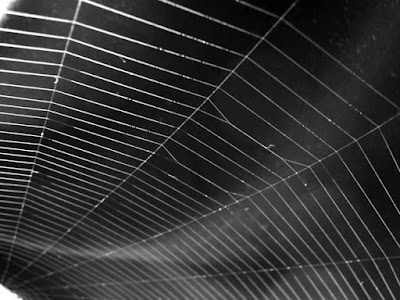“Our goal is to improve the strength, elasticity,
and toughness of artificially spun fibres by borrowing bright ideas from
nature”
MIT
Post-doctoral student Shangchao Lin commenting on MIT's successful production
of Synthetic Spider Silk using transgenic bacteria and Computational Modeling
Software
Researchers have finally done what what’s originally
thought only a Spider can do.
Researchers at the Massachusetts Institute of
Technology by successfully used transgenic bacteria to make synthetic Spider
Silk as reported the article “Spider
Silk made without the spiders”, published May 28, 2015 by Michelle Starr, CNET News.
 |
Their work, published in the Nature
Communications Journal marks the successful synthesis of Spider Silk in a
laboratory setting. Other scientists such as Professor Randy Lewis of Utah State University since August 2012 has
been using transgenic goats to produce milk laden with spider proteins in the
hopes of making Spider Silk.
Another researcher Dr. My Hedhammar of the Swedish
University of Agricultural Sciences working with a Japanese startup Spiber has
reported on May 2013 of their success in producing clothing based on synthetic Spider
Silk from Transgenic Escherichia Coli Bacteria as reported in my blog article entitled
“USTAR
produces Spider Silk From Transgenic Silkworms and Japanese Spiber from
Transgenic Escherichia Coli Bacteria - Spider Silk's big trend in Fabrics which
means I’m Out Ciara and Nikki Minaj Style”.
More recently in May 2015, a team led by Dr.
Emiliano Lepore at the University of Trento in Trento, Italy coaxed some
Pholcidae Spiders to produce Spider Silk infused with CNT (Carbon Nanotubes) as
reported in my blog
article entitled “University
of Trento feeds Pholcidae spiders with Carbon nanotubes and graphene – Spider
Silk Stronger than Kevlar suggests different mechanism for Synthetic Silk
Production”.
The interest is understandable; Spider Silk is
super-strong yet lightweight. At 6/10 the density of high-grade steel, it’s far
stronger and less like to fracture unlike Kevlar, making it the perfect
material to make Bullet-proof vests. Less obvious applications are in making
sutures for cuts, after-surgery stitching of patients and even a drug delivery
mechanism, as the body readily absorbs spider proteins without any ill effects.
So how has MIT's team improved upon what seems to be
a field of interest for many scientists? Apparently with the help of simulation
software.
MIT’s
Transgenic bacteria to produce Synthetic Spider Silk – Computational Modellin
in Time saves Nine
The MIT Team, like Dr. My Hedhammar of the Swedish
University of Agricultural Sciences, also used transgenic bacteria to produce
their Spider Silk proteins. However, their approach was to do simulation using
Computational modelling tools to simulate the Spider Silk proteins and how best
to combine them to make Spider Silk.
By using simulation software, they not only
determined the best combinational ratio of Spider Silk proteins but how to combine
them to spin them into Spider Silk of varying grades. This is important as the process
of extracting the hydrophobic and hydrophillic Spider Silk proteins can be
scaled up to an industrial manufacturing scale.
Doing it the old-fashioned way using trial-and-error
would have taken months as there are hundreds of proteins that make up Spider
Silk. The Computational modelling software made the work easier, allowing the
team to try out a huge range of molecules and determine what ratio of Spider
Silk proteins as well as what combinations best produce the type and grade of Spider
Silk that they required.
For example, Spider Silk that can be used for suture
has to be much softer, at least 60% water-soluble and less brittle and able to
bio-degrade while close to the patient's skin. Spider Silk needed to make
fabric for clothing or bullet-proof vests needs to a lot sturdier, wash proof,
waterproof and able to withstand bullets in the case of bullet proof vests.
Simulation was then followed up by lab testing, with
the Spider Silk proteins being combined in the ratios and combinations as
recommended by the Computational modelling software. The resulting Spider Silk
fibers thus far are not as strong as original Spider Silk. But the fact that
they now know how to vary the type and grade of Spider Silk using computational
modeling software means that they can also use these real-world measurements.
Thus Spider Silk with CNT or even Diamond
Nanothreads based on the research of Chemistry professor John Badding at Penn
State University as reported in my blog article
entitled “Penn
State University’s Carbon Nanothreads – How to make Carbon Nanothreads using
Oak Ridge National Laboratory Pressure Cooker” are quite possible.
Mithrail, Sutures and Wedding Dresses may be the
next big trend when Spider Silk starts being mass-produced!
No comments:
Post a Comment